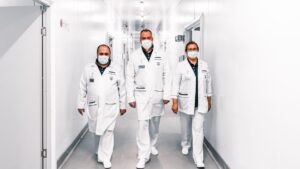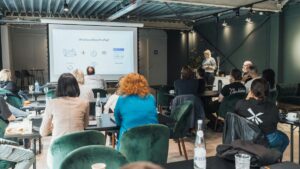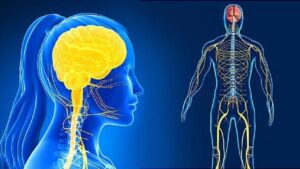For most students entering osteopathic medical school, Osteopathic Manipulative Medicine (OMM I) is their first real encounter with what makes a DO different from an MD. It’s not just about treating disease—it’s about using your hands, mind, and intuition to promote the body’s natural ability to heal.
At Touro College of Osteopathic Medicine (TouroCOM), students learn that healing is not static—it’s motion. From gentle palpation to dynamic muscle energy techniques, OMM I introduces the science and art of restoring structure and function.
What Is OMM I?
OMM I is the foundation of a multi-semester course sequence in which students:
- Learn to palpate and assess the musculoskeletal system
- Understand somatic dysfunction and its impact on health
- Apply manual techniques to restore motion and function
- Integrate osteopathic principles into every patient encounter
Students not only gain clinical skills—they develop a deeper sense of connection to the human body, to their patients, and to themselves as healers.
Why OMM I Matters for Future DOs
OMM I isn’t just about passing a class or preparing for boards. It’s about becoming a physician who treats the whole person—with empathy, precision, and hands-on care.
Key Benefits of OMM I:
- Enhances Diagnostic Skills – Learn to feel what you can’t always see.
- Develops Touch Sensitivity – Essential for physical exams and OMT.
- Strengthens Anatomy Understanding – Palpate where others only visualize.
- Fosters Clinical Reasoning – Link structure and function to patient symptoms.
- Builds Patient Rapport – Hands-on care creates trust and connection.
What You’ll Learn in OMM I at TouroCOM
| Component | Description |
|---|---|
| Palpation & Surface Anatomy | Learn how to detect tissue texture, asymmetry |
| TART Principles | Identify somatic dysfunction using key markers |
| Manual Techniques | Muscle energy, myofascial release, soft tissue |
| Postural Screening | Spot dysfunction from head to toe |
| Intro to OMT Application | Start integrating treatment with clinical care |
| Osteopathic Philosophy | Understand the body as a dynamic, self-healing unit |
Tips for Mastering OMM I
- Practice Often – Whether on peers or pillows, build muscle memory early
- Review Anatomy Constantly – Especially spinal landmarks, fascia, and joints
- Watch Yourself – Record lab practice to correct hand placement and movement
- Listen to Feedback – Faculty and peers will help fine-tune your techniques
- Stay Present – OMM requires focus, presence, and intention
How SGA Supports Your OMM I Journey
At SGA Middletown, we understand that OMM I can feel overwhelming at first. That’s why we offer:
- Peer-led OMM review sessions
- Simplified study guides and checklists
- Practice labs before practical exams
- Technique demos from upperclassmen
You’re not just learning—you’re becoming an osteopathic physician. And SGA is here to support every step of that journey.
Why Healing in Motion Means More Than Medicine
OMM I teaches that motion is health. A restriction in a joint, a tight fascia, or a rib that doesn’t move can all reflect dysfunction in the body. By restoring balance and mobility, DOs help patients feel better—often without medication or invasive treatment.
And for many students, OMM I becomes the most meaningful and memorable course of their first year. It’s where clinical knowledge meets compassion, and theory becomes touch.
FAQs
Do I need prior experience to succeed in OMM I?
Nope! OMM I starts from the basics. You’ll learn everything from hand positioning to patient interaction step by step.
Is OMM I relevant for all specialties?
Yes! Whether you pursue surgery, family med, or psychiatry, understanding structure-function relationships and having diagnostic palpation skills will set you apart.
Is this course hard?
It’s challenging—but incredibly rewarding. With consistent practice and the right support, students thrive and gain confidence quickly.
How does OMM show up on board exams?
COMLEX Level 1 and Level 2 include OMM questions and scenarios. Mastering OMM I gives you a strong edge in preparing for these exams.




